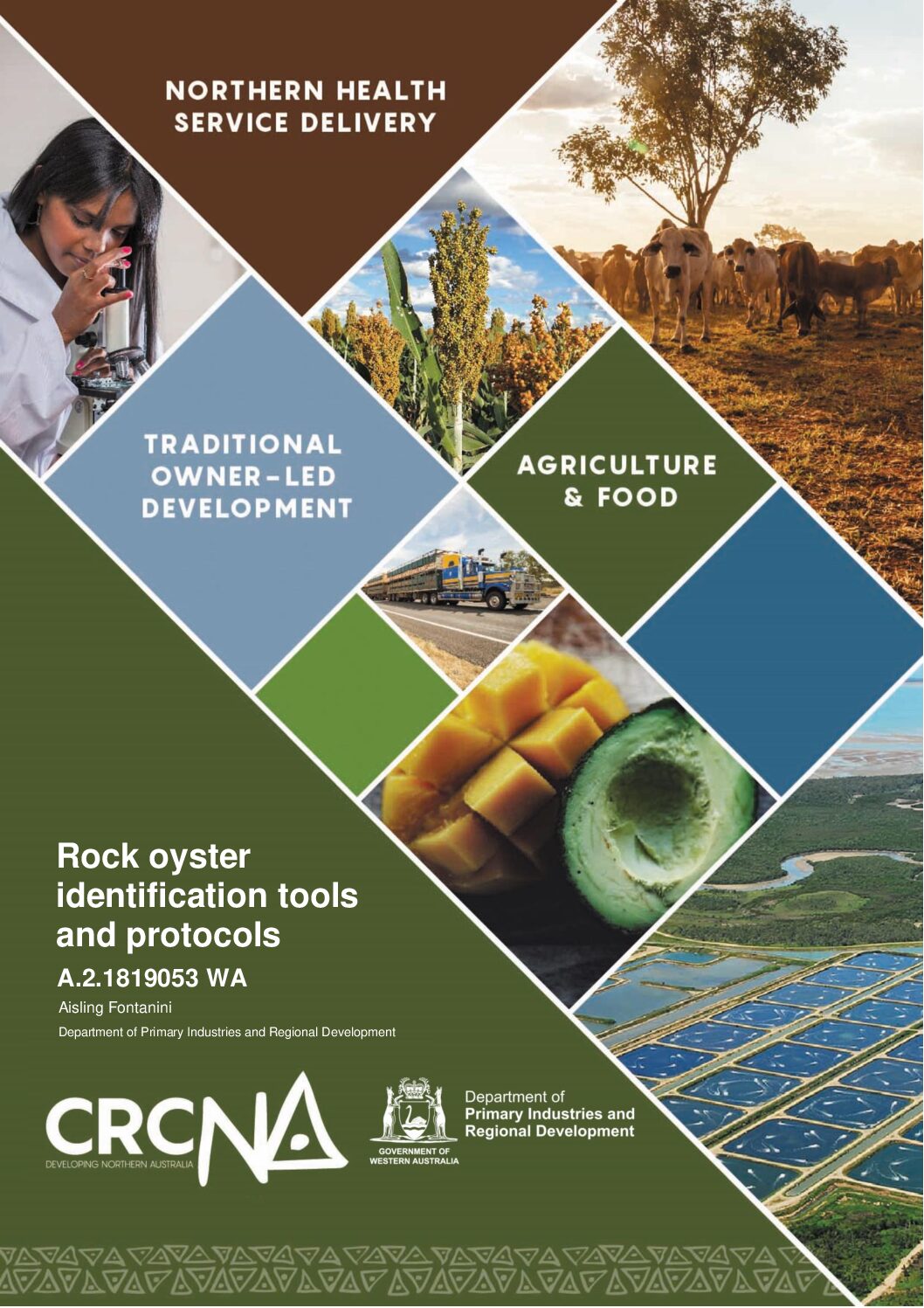
- Author Aisling Fontanini - WA DPIRD
- Publish date 5 December 2023
- Type Report
- ISBN 978-1-922437-53-2
- Documents
- Aquaculture
Summary
This document highlights the species distribution of Western Australian (WA) tropical rock oyster species that have been identified for potential aquaculture development. One of these species, Saccostrea scyphophilla, (Milky Rock Oyster), has performed poorly in previous field trials and is not recommended for further research and development. However, its distribution in the wild overlaps with other species of interest that are morphologically similar. Identifying rock oyster species by morphology alone is unreliable and presents challenges for farmers, hatcheries and regulators as the tropical rock oyster industry continues to develop in WA. This document highlights current protocols and processes available to interested parties to identify and manage the farming of several tropical rock oyster species in WA.
Projects
Tropical Rock Oyster research and development WA
This project establishes a collaborative cross jurisdictional approach to address the most significant technical and regulatory issues that confront the fledgling Tropical Rock Oyster (TRO) industry. The project aims to examine and resolve several key issues to support the development of the TRO industry by undertaking sub-projects addressing the different research needs identified: Securing commercial spat supply – will utilise existing hatchery infrastructure and expertise at the DPIRD Hillarys facility to refine culture techniques for the Blacklip Rock Oyster (BLRO) and other TRO species to be identified in WA. Researchers will employ standard hatchery protocols used in the production of SROs on the TRO species identified in the Pilbara and Kimberley and compare performances before moving the experiment to ocean-based nurseries. Optimisation of grow-out methods and gear technology – Grow-out trials will take place in the Kimberley (Cone Bay) and in the Pilbara (three sites selected in the Dampier Archipelago) at sites providing intertidal and subtidal conditions for the farming of new TRO species (and BLRO in the Kimberley). These trials will include work to: identify TRO species with good aquaculture potential and what system (intertidal or subtidal) they should be cultured with. compare the performance of a maximum of three TRO species (likely to be two species) during grow out in order to select the best performing species. industry road testing the different grow out scenarios for new TRO species. The project team worked cross-jurisdictionally with researchers from the Darwin Aquaculture Centre working on project A.2.1819053NT. Outcomes This project has developed identification tools and agreed common names for key commercial tropical oyster species to prevent potential market confusion and ensure accurate licencing and management of the emerging industry. The Darwin Aquaculture Centre has developed a hatchery manual for the Blacklip Rock Oyster (Saccostrea echinata). In April 2023, more than 700,000 mature oysters grown as part of this research project were transferred to commercial partner Maxima. Maxima will continue refining grow-out techniques with the aim to scale up to commercial harvest within the next decade.


